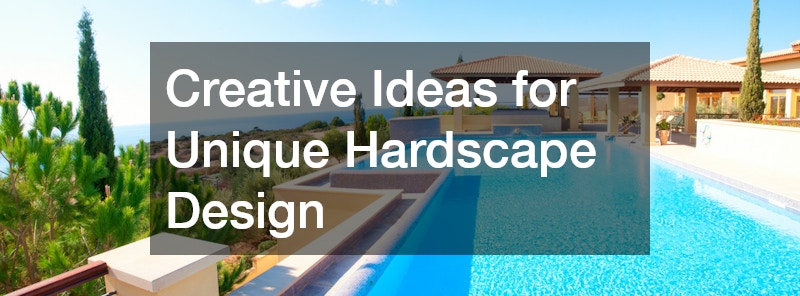
Focusing on creative ideas in your hardscape design can transform your outdoor space into a distinctive and functional area. By leveraging unique materials, layouts, and elements, you can enhance the beauty and usability of your landscape.
Hardscape design encompasses various elements that contribute to the overall aesthetic and functional quality of an outdoor area. Key components include patios, walkways, retaining walls, and driveways.
Video Source
These structures form the backbone of a landscape design, providing structure and definition to the space.
The layout and spatial balance of hardscape features are crucial in creating a harmonious outdoor space. Well-planned spatial arrangements ensure that all elements work together seamlessly without overcrowding or underutilizing areas.
The spatial layout of hardscape elements is vital for optimizing the use of outdoor areas. Efficiently designed spaces facilitate easy movement and flow between different zones, making the area more user-friendly.
Balance is a key principle in landscape design that ensures all components of a scene are in agreement. This can be achieved through symmetry, repeating patterns, and using focal points to draw the eye across the space.
Incorporating both large and small elements can create a sense of proportion and scale. Doing so provides varied visual experiences and prevents areas from feeling flat or monotonous.
The demand for innovative hardscape materials continues to grow as homeowners seek both aesthetic and practical solutions. Contemporary materials include recycled composites and eco-friendly options like permeable pavers.
Sustainable materials, such as reclaimed wood and recycled aggregates, play a crucial role in reducing the carbon footprint associated with traditional landscaping. Choosing these materials supports green building practices.
Blending traditional and modern elements often involves the strategic use of new and old materials side by side. Concrete, once considered basic, can be transformed with additives and finishes for a modern flair.
Sustainable hardscape materials offer numerous environmental benefits, such as improved stormwater management and reduced urban heat. Permeable materials allow water to absorb into the ground, reducing runoff.
Eco-friendly materials, such as bamboo decking and recycled plastic composites, are not only sustainable but also provide durability and aesthetic appeal. These options support energy-efficient and low-maintenance landscaping.
Choosing eco-friendly materials means investing in the long-term health of the planet while enjoying a unique and beautiful outdoor space. This sustainable approach aligns with the growing trend of environmentally responsible living.
Marrying traditional and modern elements in landscape design can create intriguing contrasts that captivate attention. Mixing classic brick with sleek metals exemplifies this juxtaposition.
Concrete can be stamped and colored to emulate the look of natural stone, offering a modern take on traditional materials. This technique provides both durability and unique aesthetic appeal.
The integration of glass or metals with traditional stone or wood provides an ultra-modern aesthetic while grounding the design in time-tested materials, ensuring both elegance and innovation.
Lighting plays a significant role in hardscape design by highlighting features, providing safety, and enhancing ambiance. Strategic lighting installations can transform an outdoor area into an inviting nighttime retreat.
Choosing the right fixtures and placements can accentuate architectural features and create visual interest. From uplighting to pathway lights, lighting techniques bring a new dimension to the hardscape.
Proper illumination is essential for safety, guiding guests safely along paths and stairs. Combining functionality with aesthetics ensures that outdoor spaces are both beautiful and practical after dark.
Effective lighting techniques can highlight architectural details, such as stonework or water features. Spotlights can be positioned to draw attention to specific focal points within the landscape.
Shadowing and silhouetting are advanced techniques that provide depth and drama. Positioning a light source in front of an object creates a striking silhouette, enhancing visual interest.
The use of color-changing LED lights adds an element of dynamism to the outdoor environment. These lights can be programmed for different settings, offering versatility and customization.
Ensuring adequate lighting for safety, particularly around steps and drop-offs, is vital. Solar-powered and low-voltage lighting options offer safety enhancements while minimizing energy usage.
An aesthetically pleasing lighting scheme involves carefully balancing light and shadow. Avoiding overly bright lights helps maintain a natural ambiance and reduces light pollution.
Strategic placement of lighting enhances both the practical and aesthetic aspects of the landscape. It is important to select fixtures that complement the overall design while fulfilling their functional purpose.
By considering the key elements, blending techniques, material choices, lighting, and trends outlined in this article, you can create a unique and inspiring hardscape design. Implementing these ideas will enhance the aesthetic appeal of your outdoor space and add functionality and value.
